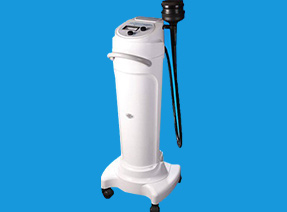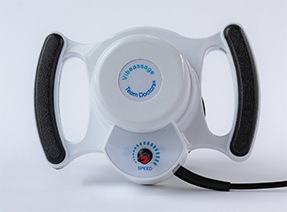THE HUMAN SPRING APPROACH TO
THORACIC OUTLET SYNDROME
by Dr James Stoxen DC., FSSEMM (hon) FWSSEM
GLOSSARY
S
saccule – a bed of sensory cells situated in the inner ear. The saccule translates head movements into neural impulses, which the brain can interpret. The saccule detects linear accelerations and head tilts in the vertical plane.
Sacro occipital technique (SOT) – specialized, comprehensive, gentle and innovative technique of Chiropractic founded in 1925 by Dr De Jarnette, It is so named because of the relationship between the sacrum (base of the spine) and the occiput (base of the skull). As an antidote to the forceful and regimented exercises of Japan, that anyone could practice easily to restore balance and health.
scalene block injection – sometimes employed as an alternative or as an adjunct to general anesthesia for surgery of the upper extremity. This technique involves the injection of local anesthetic agents in close proximity to the brachial plexus, temporarily blocking the sensation and ability to move the upper extremity.
scalene injection – injection of medication into the scalene muscles.
scalene muscle – he scalene muscles are a group of three pairs of muscles in the lateral neck, namely the anterior scalene, middle scalene, and posterior scalene. The anterior and middle scalene muscles can be involved in certain forms of thoracic outlet syndrome. When it contracts people refer to it sometimes as a pulled neck muscle.
scalene muscle spasm – scalene myofascial pain syndrome is a regional pain syndrome wherein pain originates over the neck area and radiates down to the arm.
scalene syndrome – (scalene myofascial pain syndrome) a regional pain syndrome wherein pain originates over the neck area and radiates down to the arm.
scalene triangle – triangular gap bounded by the scalenus anterior and scalenus medius muscles and the first rib to which the muscles attach; the hiatus provides passage for the subclavian artery and the roots scapula alta.
scalenus anterior syndrome – a complex of symptoms including pain and numbness in the region of the shoulder, arm, and neck
scalenus anticus syndrome – a complex of symptoms including pain and numbness in the region of the shoulder, arm, and neck that is caused by compression of the brachial plexus or subclavian artery or both by the scalenus anticus muscle.
scalenus anticus syndrome symptoms – include extremity paresthesia, pain, and weakness as well as neck pain and occipital headache.
scalenus syndrome – there is no such thing as scalenus syndrome
scar tissue – fibrous tissue that forms when normal tissue is destroyed by disease, injury, or surgery. For example, scar tissue forms when a wound heals after a cut, sore, burns, or other skin condition, or when an incision (cut) is made into the skin during surgery. It may also form inside the body when certain conditions, such as cirrhosis, cause normal tissue to become fibrous tissue.
scoliosis – scoliosis is an abnormal curving of the spine. Your spine is your backbone. It runs straight down your back.
Selective serotonin reuptake inhibitor (SSRI) – a drug that affects chemical messengers, called neurotransmitters, which are released by one nerve and taken up by other nerves. Neurotransmitters that are not taken up by other nerves are taken up by the same nerves that released them. This process is termed “reuptake.” SSRIs work by inhibiting the reuptake of serotonin, an action that allows more serotonin to be available to be taken up by other nerves.
Selective Serotonin Reuptake Inhibitor SSRI cessation syndrome (SSRI discontinuation syndrome, SSRI withdrawal syndrome) – Interruption of treatment with an anti-depressant medication is sometimes associated with an antidepressant discontinuation syndrome; in early reports it was referred to as a “withdrawal reaction.”1 Symptoms of antidepressant discontinuation syndrome can include flu-like symptoms, insomnia, nausea, imbalance, sensory disturbances, and hyperarousal.
Selective Serotonin Reuptake Inhibitor SSRI discontinuation syndrome (SSRI withdrawal syndrome, SSRI cessation syndrome) – Interruption of treatment with an anti-depressant medication is sometimes associated with an antidepressant discontinuation syndrome; in early reports it was referred to as a “withdrawal reaction.”1 Symptoms of antidepressant discontinuation syndrome can include flu-like symptoms, insomnia, nausea, imbalance, sensory disturbances, and hyperarousal.
Selective Serotonin Reuptake Inhibitor SSRI withdrawal syndrome (SSRI discontinuation syndrome, SSRI cessation syndrome) – Interruption of treatment with an anti-depressant medication is sometimes associated with an antidepressant discontinuation syndrome; in early reports it was referred to as a “withdrawal reaction.”1 Symptoms of antidepressant discontinuation syndrome can include flu-like symptoms, insomnia, nausea, imbalance, sensory disturbances, and hyperarousal.
self adjustments – when someone adjusts the position or motion of their own spine or extremity joints.
semicircular canals – three hula-hoop looking fluid-filled tubes, at right angles to one another, that are concerned with the sense of orientation and equilibrium of the body.
semicircular ducts – three hula-hoop looking fluid-filled tubes, at right angles to one another, that are concerned with the sense of orientation and equilibrium of the body.
sense kinesthesia – a sense mediated by receptors located in muscles, tendons, and joints and stimulated by bodily movements and tension.
sense of balance – a sensory system located in structures of the inner ear that registers the orientation of the head.
sensory receptors – neurons specialized for receiving specific kinds of stimuli.
sensory system – a part of the nervous system responsible for processing sensory information. A sensory system consists of sensory neurons (including the sensory receptor cells), neural pathways, and parts of the brain involved in sensory perception. Commonly recognized sensory systems are those for vision, hearing, touch, taste, smell, and balance.
serotonin syndrome – a group of symptoms that may occur following use of certain serotonergic medications or drugs. Symptoms include high body temperature, agitation, increased reflexes, tremor, sweating, dilated pupils, and diarrhea.
serous membrane – a mesothelial tissue that lines certain internal cavities of the body, forming a smooth, transparent, two-layered membrane lubricated by a fluid derived from serum. The peritoneum, pericardium, and pleura are serous membranes.
sertraline (Zoloft) – an antidepressant belonging to a group of drugs called selective serotonin reuptake inhibitors (SSRIs). Sertraline affects chemicals in the brain that may be unbalanced in people with depression, panic, anxiety, or obsessive-compulsive symptoms.
short clavicle syndrome – congenital or developmental shorting of the clavicle is an uncommon and isolated condition leading to a tangential position of the scapula. It presents in childhood as abnormal posture and may be familial. It causes minimal disability and affected patients do not require treatment.
shortness of breath (dyspnea) – is an uncomfortable condition that makes it difficult to fully get air into your lungs.
shoulder arm syndrome – there is no such thing as a shoulder arm syndrome
shoulder arthroscopy – surgery that uses a tiny camera called an arthroscope to examine or repair the tissues inside or around your shoulder joint. The arthroscope is inserted through a small cut (incision) in your skin
shoulder bursitis – an inflamed shoulder bursa. Your bursa is a fluid-filled sac that helps to reduce friction in your shoulder spaces.
shoulder impingement syndrome – is a clinical syndrome, which occurs when the tendons of the rotator cuff muscles become irritated and inflamed as they pass through the subacromial space.
shoulder subluxation – glenohumeral subluxation is defined as a partial or incomplete dislocation that usually stems from changes in the mechanical integrity of the joint. In a subluxation, the humeral head slips out of the glenoid cavity as a result of weakness in the rotator cuff or a blow to the shoulder area.
shoulder tendonitis – inflammation of the tendons of the shoulder. Shoulder tendonitis (or tendinitis) is also an inflammation injury to the tendons of your shoulder’s rotator cuff.
skin receptors – respond to stimuli such as touch and pressure and signal the brain by activating portions of the nervous system.
slipped disc (herniated disc, herniated disk, bulged disc) – the connecting part between the vertebra bulges or protrudes.
soft tissue manipulation – a treatment method that covers a range of interventions that all aim to improve the health condition of a soft tissue. STM treatment technique can improve poor fluid circulation or oxygen supply, relieve pain, reduce swelling, increase or release tension in the soft tissue or mobilize scar tissue.
soft tissue mobilization – soft tissue mobilization is a form of manual physical therapy where your licensed physical therapist uses hands-on techniques on your muscles, ligaments and fascia with the goal of breaking adhesions and optimizing your muscle function.
Somatosensory Evoked Potential (SSEP) test – a test to check the electrical signals that are transmitted from the body to the brain. The test determines if the nerves are able to send and receive information, such as pain, touch, and temperature.
Somatosensory Evoked Potential SSEP Test – a test showing the electrical signals of sensation going from the body to the brain. The signals show whether the nerves that connect to the spinal cord are able to send and receive sensory information like pain, temperature, and touch.
somatosensory reflex – a part of the sensory nervous system. Other types include mechanoreceptors, chemoreceptors, and nociceptors and they send signals along a sensory nerve to the spinal cord where they may be processed by other sensory neurons and then relayed to the brain for further processing.
somatosensory system – the part of the sensory system concerned with the conscious perception of touch, pressure, pain, temperature, position, movement, and vibration, which arise from the muscles, joints, skin, and fascia.
Sonoelastography – is a method that can assess the mechanical properties of soft tissue (like stiffness) via ultrasound imaging.
sotai – a Japanese form of muscular or movement therapy as an antidote to the forceful and regimented exercises of Japan, that anyone could practice easily to restore balance and health.
spasmodic – muscle spasms or contractions occurring or done in brief, irregular bursts
spinal board – a patient handling device designed to provide rigid support during movement of a person with suspected spinal or limb injuries.
spinal cord – the bundle of nerve fibers and associated tissue that is enclosed in the spine and connects nearly all parts of the body to the brain, with which it forms the central nervous system.
spinal cord compression – Your spinal cord has nerves that send signals or messages back and forth between your brain and the rest of your body. Spinal cord compression occurs when a mass places pressure on the cord. A mass can include a tumor or bone fragment. Compression can develop anywhere along the spinal cord from the neck to the lower spine.
spinal cord tumor – a spinal tumor is a growth that develops within your spinal canal or within the bones of your spine.
spinal fusion – A surgical procedure in which two or more of the vertebrae in the spine are united together so that motion no longer occurs between them.
spinal stimulators – spinal cord stimulation (SCS) is a method of treatment in which a surgically implanted pulse generator sends electrical currents through the spine in order to interfere with nerve impulses that cause chronic pain.
splinting – by splinting the area with spasm, muscle ‘locking’ effectively reduces painful joint movements.
splinting (muscle splinting) – protective spasm is the brain’s reflexogenic attempt to prevent further insult to injured tissues. By splinting the area with spasm, muscle ‘locking’ effectively reduces painful joint movements.
spondylosis – a painful condition of the spine resulting from the degeneration of the intervertebral disks.
sports doctor – physicians who prescribe treatments for professional and amateur athletes. They’re trained to address issues associated with nutrition, sports psychology, and substance abuse and may also counsel athletes on injury prevention.
sports massage – a form of bodywork geared toward participants in athletics. It is used to help prevent injuries, to prepare the body for athletic activity and maintain it in optimal condition, and to help athletes recover from workouts and injuries.
sports medicine – a branch of medicine that includes the science of athletic nutrition and conditioning, preventing and diagnosing athletic injuries and increasing performance.
spring – a device that deforms its physical shape, storing energy then releases back to its exact original shape releasing energy.
spring back – the capacity or tendency of a bent or shaped elastic material (such as a metal) to revert to its original form.
spring compliance – when we make the spring more compliant, we are loosening the tension on the spring allowing it to be suppler, and so it can take up impacts on hard surfaces easier.
spring deformation – when the spring changes it shape.
spring elasticity – when the spring deforms its shape then reforms back to its exact original shape.
spring engineering – the study of the properties of spring.
spring mechanism – an elastic object that stores mechanical energy.
spring stiffness – stiffness describes the resistance of a body to deformation. In regard to athletic performance, a stiffer leg-spring would be expected to augment performance by increasing utilization of elastic energy.
spring strength – how strong a spring is in resisting deformation.
spring yield – maximum yield capacity of loading your spring before it begins to deform permanently.
spring-mass model – the spring-mass model represents the legs as springs and the torso and head as the non spring- like mass.
standard-of-care – “medical standard of care” is typically defined as the level and type of care that a reasonably competent and skilled health care professional, with a similar background and in the same medical community.
static equilibrium – if an object is at rest and is in a state of equilibrium, then we would say that the object is at “static equilibrium.” “Static” means stationary or at rest. A common physics lab is to hang an object by two or more strings and to measure the forces that are exerted at angles upon the object to support its weight.
static posture evaluation – the evaluation of your posture when in the standing or sitting position.
static stretches – a stretch is held in a challenging but comfortable position for a period of time, usually somewhere between 10 to 30 seconds.
stenting – a short narrow metal or plastic tube often in the form of a mesh that is inserted into the lumen of an anatomical vessel (such as an artery or a bile duct) especially to keep a previously blocked passageway open.
stiff neck – discomfort or sore neck pain when trying to turn, move, or flex the neck
stimuli – something that excites an organism or part to functional activity.
strain sensors – sensors in the body that detect strain of the tissues.
strength training – a type of physical exercise specializing in the use of resistance to induce muscular contraction, which builds the strength, anaerobic endurance, and size of skeletal muscles.
stretches for thoracic outlet syndrome – stretches that can open the thoracic outlet and tunnel
stroke – a stroke occurs when blood flow to a part of the brain stops.
structural integration – the focus of structural integration is on the fascia rather than on the muscles (as in massage). The fascia is a protective layer of connective tissue that surrounds each muscle and muscle fiber. … Structural Integration practitioners use a range of techniques to lengthen and reposition the fascia and the body.
structural massage – a type of bodywork that focuses on the connective tissue, or fascia, of the body. Fascia surrounds muscles, groups of muscles, blood vessels, organs, and nerves, binding some structures together while permitting others to slide smoothly over each other.
Subacute sclerosing panencephalitis (SSPE) – is a rare form of chronic progressive brain inflammation caused by measles virus.
subclavian artery – this artery extends from inside the thorax to the outer border of the first rib where it becomes the axillary artery.
subclavian artery aneurysm – a rare localized widening (dilatation) or bulge of an artery.
subclavian steal syndrome a constellation of signs and symptoms that arise from retrograde (reversed) blood flow in the vertebral or the internal thoracic artery, due to a proximal stenosis (narrowing) and/or occlusion of the subclavian artery.
subclavian vein (“innominate vein”) – location: a continuation of the axillary vein and runs from the outer border of the first rib to the medial border of anterior scalene muscle. From here it joins with the internal jugular vein to form the brachiocephalic vein. The function of the subclavian vein is to empty blood from the upper extremities and then carry it back to the heart.
subclavian vein compression – Sub means under and clavian means clavicle so the the compression of the subclavian vein usually occurs under the clavicle. It is usually accompanied by pain below collarbone or sharp pain below the collarbone.
subclavian vein stenosis – refers to a narrowing of the subclavian vein.
subclavian vein thrombosis – refers to a blood clot in the subclavian vein.
subclavius muscle – referred sometimes as the collar bone muscle. The subclavius muscle originates from the first rib so it lifts the first rib when it contracts. It inserts on the collarbone so it depresses the collarbone when it contracts.
subconscious perception – subconscious is something happening with little or no perception by the individual.
subcoracoid brachial plexus compression – subcoracoid impingement is an unusual form of shoulder impingement results from narrowing of the coracohumeral interval (space between the tip of the coracoid and the humerus).
subcoracoid space – the space between the apex of the coracoid process and the coracobrachial muscle and the short head of the biceps brachii muscle and the lesser tubercle of the humerus.
subjective – what is noted by the doctor based on what someone feels.
subluxations – in medicine, a subluxation is an incomplete or partial dislocation of a joint or organ.
Sultan – a title of someone who rules or governs in some Muslim countries.
superior sulcus tumor (Pancoast Tumor) (pulmonary sulcus tumor) – a lung tumor at the apex of the lung.
superior thoracic aperture – thoracic inlet, also known as the superior thoracic aperture, refers to the opening at the top of the thoracic cavity
supraclavicular fossa – a depressed area above the middle of the clavicle, lateral to the sternocleidomastoid.
supraclavicular surgery approach – an approach to surgically decompressing the compressed thoracic outlet where the incision is just above the clavicle bone. The supraclavicular approach addresses these concerns. First, the anterior scalene muscle is essentially entirely removed. With proper technique it is completely visible from the scalene tubercle to its origin at the spine. This approach also allows removal of all muscular and associated tissue medially, completely clearing the parietal pleura at the apex of the lung, at least theoretically reducing the chances of scar tissue arising from residual tissue here.
supraspinatus tear – a tear or rupture of the tendon of the supraspinatus muscle.
surface EMG – a technique in which electrodes are placed on (not into) the skin overlying a muscle to detect the electrical activity of the muscle.
surgical decompression – a procedure aimed at releasing neural compression that is caused by anatomical abnormalities in the spine.
surgical resection – surgery excision or surgical removal of all or part of an organ, tissue, or structure.
surgical revascularization – the restoration of perfusion to a body part or organ that has suffered ischemia.
surgical thrombectomy – a type of surgery to remove a blood clot from inside an artery or vein.
sustained muscle contraction – when a muscle is contracted for a long time without relaxation. It happens when the motor nerve that innervates a skeletal muscle emits action potentials at a very high rate.
swedish message – the use of hands, forearms or elbows to manipulate the superficial layers of the muscles to improve mental and physical health.
swelling (edema) – body swelling caused by fluid in your body’s tissues. It usually occurs in the feet, ankles and legs, but it can involve your entire body.
swelling (inflammation) – defined as the swelling or pain that comes from an injury or illness.
symptom – a physical or mental feature that is regarded as indicating a condition of disease, particularly such a feature that is apparent to the patient.
syncope – temporary loss of consciousness caused by a fall in blood pressure.
syndrome – a group of symptoms that consistently occur together or a condition characterized by a set of associated symptoms.
syringomyelia – a chronic progressive development of a fluid-filled cyst (syrinx) within your spinal cord. Over time, the cyst may enlarge, damaging your spinal cord and causing pain, weakness and stiffness, among other symptoms.

Meet Dr James Stoxen DC., FSSEMM (hon)
President, Team Doctors® Masters Academy
www.drstoxen.com
Dr Stoxen’s Curriculum Vitae
Stay connected to our thoracic outlet syndrome social media sites
1.1k
Members

READ THESE CHAPTERS OF DR STOXENS BOOK FREE HERE!
ARTICLE CATEGORIES
- Testimonials (13)
- Success Stories (13)
- Failed TOS Surgery (1)
- Thoracic Outlet Syndrome (11)
- Compartment Syndrome – Forearm (5)
- Shoulder Replacement Surgery (1)
- Cervical Discectomy (1)
- Cervical Fusion Surgery (1)
- What is TOS? (3)
- Thoracic Outlet Anatomy (1)
- Thoracic Outlet Engineering (1)
- Causes Of TOS (6)
- The TOS Examination (1)
- Diagnostic Tests for TOS (1)
- What Mimics TOS? (1)
- Paget-Schroetter Syndrome (2)
- TOS Surgery (2)
- Posture Tips (1)
- Self Treatment (1)
- What doesn’t work and why? (1)
- What works and why? (1)
- Stretches for TOS (1)
- Exercises for TOS (1)
- Surgery for TOS (1)
- Case Studies (2)
- Chapter Reviews (10)
- Uncategorized (16)
VIDEO TUTORIALS
Subscribe to our newsletter
Team Doctors® Master’s Academy
Professional Development Courses
Launching January 1, 2022!
Team Doctors® Master’s Academy
Patient Self-Care Workshops
Launching January 1, 2022!


















